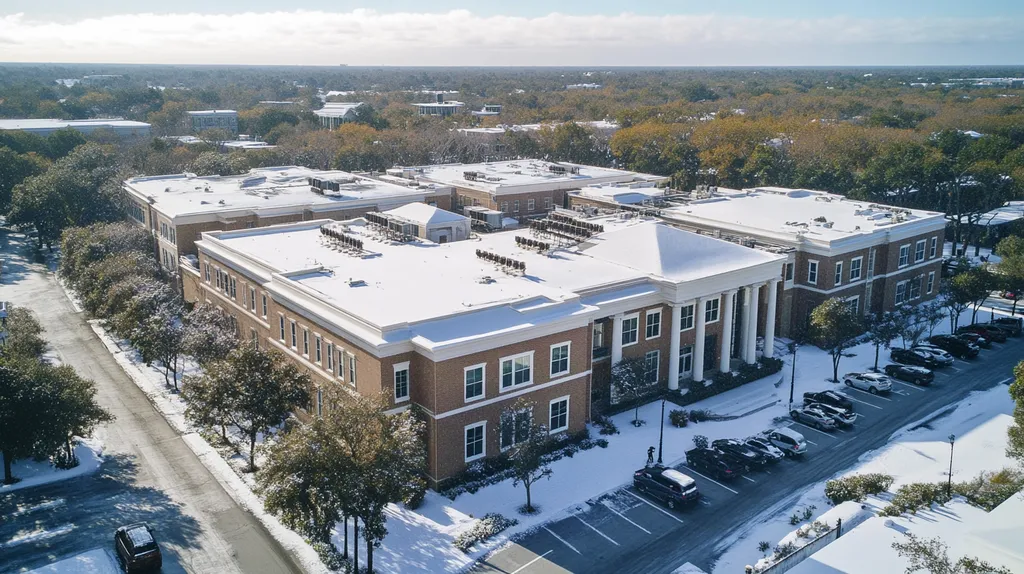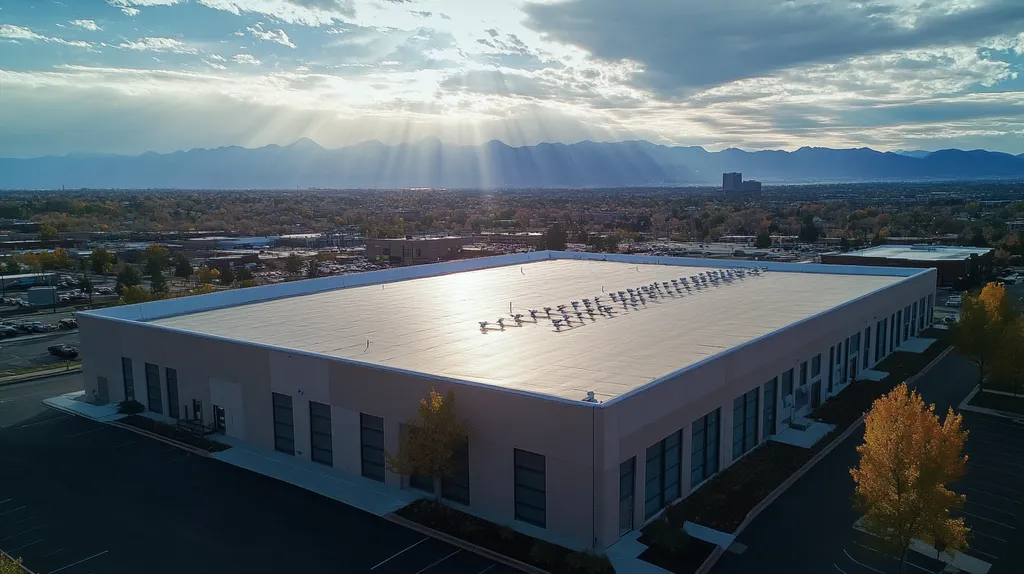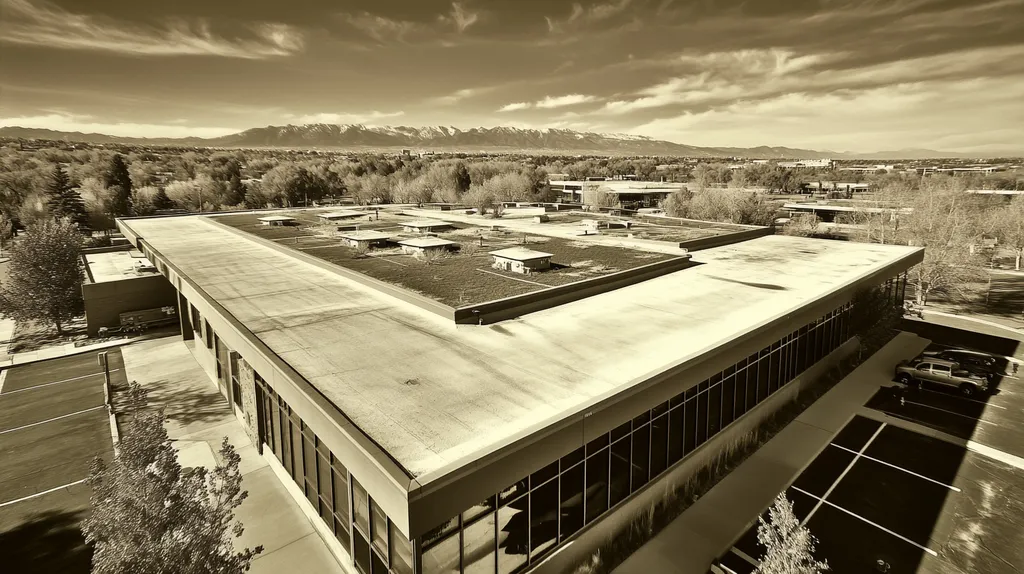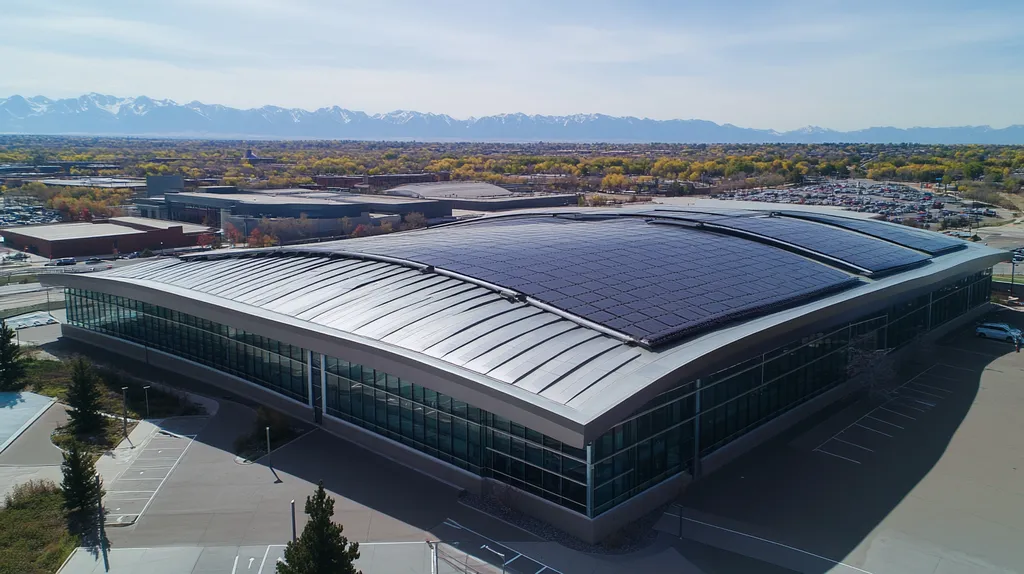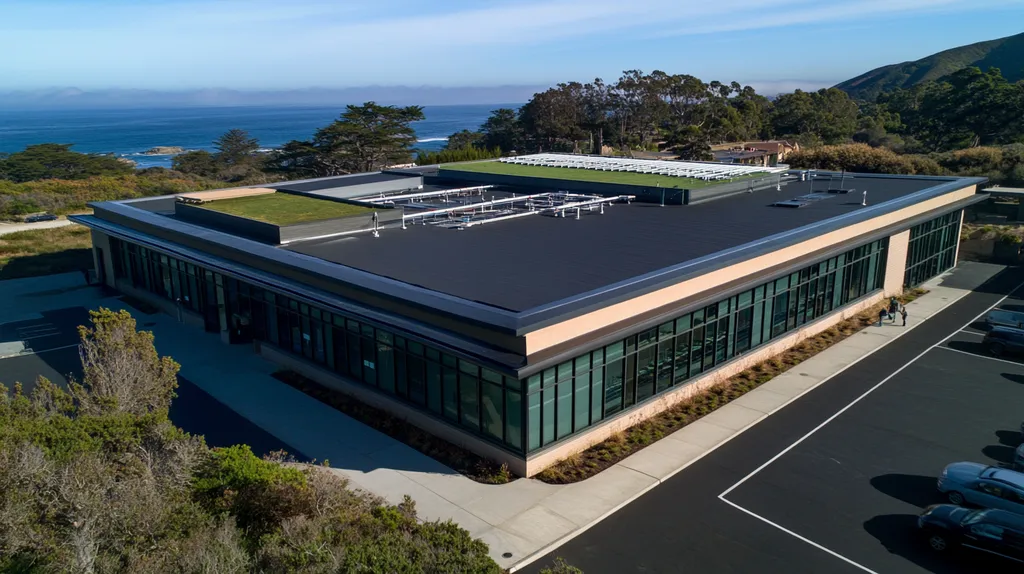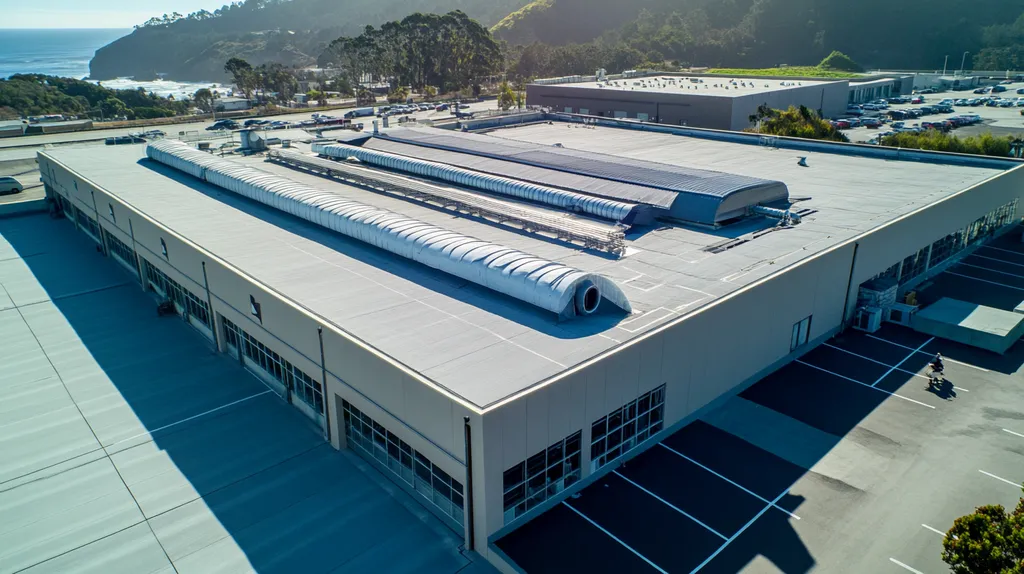In commercial roofing, the difference between safety and catastrophe often comes down to mere inches. With falls accounting for 36% of all construction fatalities last year, proper safety protocols aren’t just regulatory requirements—they’re life-saving necessities.
The complexity of modern commercial roofs, combined with evolving OSHA standards and new technologies, demands a systematic approach to protecting workers and property owners from devastating accidents and financial liability.
This comprehensive guide examines the critical components of roofing safety protocols, from fundamental concepts through implementation and optimization, providing property owners and facility managers with actionable strategies to ensure safer roofing operations.
SECTION 1: FUNDAMENTAL CONCEPTS
Safety in commercial roofing isn’t just about following rules—it’s about preventing catastrophic outcomes. With roofing accidents accounting for nearly one-third of construction-related fatalities, the stakes couldn’t be higher. Every commercial roof project requires a comprehensive understanding of safety protocols, proper training, and hazard awareness to protect both workers and property owners from devastating consequences.
Understanding OSHA Regulations
OSHA regulations form the legal foundation of roofing safety, establishing minimum requirements that every commercial roofing project must meet. These standards cover everything from fall protection systems to equipment operation protocols.
For property owners, OSHA compliance isn’t optional—it’s a legal necessity that directly impacts liability exposure. Non-compliance can result in project shutdowns, substantial fines, and legal complications that can persist long after project completion.
Regular safety audits and documentation of compliance measures protect both workers and property owners. This includes maintaining records of safety training, equipment inspections, and incident reports.
Property owners should verify that their roofing contractors maintain current OSHA certifications and can demonstrate a clear understanding of all applicable safety requirements.
Introduction to Roof Safety Protocols
Safety protocols serve as the practical application of OSHA regulations, translating requirements into actionable steps. These protocols must detail specific procedures for common roofing tasks while accounting for unique project challenges.
Essential elements include comprehensive worker training programs, equipment safety checks, and emergency response procedures. Each protocol should clearly outline roles, responsibilities, and reporting structures.
Equipment operation demands particular attention, with only qualified personnel permitted to handle machinery and tools. (source: Washington State Department of Labor & Industries)
Weather monitoring and response procedures must be integrated into daily operations, as environmental conditions can rapidly change working conditions on a roof.
Common Hazards in Roofing
Falls represent the most immediate threat in commercial roofing, requiring multiple layers of protection including personal fall arrest systems, guardrails, and safety nets. These systems must be inspected daily and maintained in perfect working order.
Falling objects pose risks to both workers and passersby below. Tool tethers, debris netting, and designated material staging areas help minimize these dangers.
Electrical hazards from overhead power lines and roof-mounted equipment demand careful planning and strict adherence to minimum approach distances.
Chemical exposure from roofing materials requires proper protective equipment and ventilation protocols. This includes respiratory protection during tear-off operations and when working with volatile adhesives.
SECTION 2: SYSTEM COMPONENTS
Every year, preventable roofing accidents claim lives and cost businesses millions in liability. Recent data shows that 34% of construction fatalities involve falls, with commercial roofing being particularly high-risk. The difference between safety and catastrophe often comes down to the proper implementation of three critical system components: physical barriers, personal protection equipment, and specialized safety tools.
Guardrail Systems and Netting
Understanding the regulatory landscape is fundamental when addressing safety in commercial roofing. Proper guardrail systems must meet specific OSHA requirements, including a minimum top rail height of 42 inches and the ability to withstand 200 pounds of force in any direction. (source: QT Commercial)
Safety netting serves dual purposes: catching falling objects and providing backup fall protection for workers. These systems must be installed within 30 feet vertically of the work surface and tested to ensure they can support potential impact loads.
Warning lines must be set up at least 6 feet from roof edges, creating clear boundaries for work zones. These systems require daily inspection and documentation to maintain their protective capacity.
Proper installation includes secure anchoring points, regular tension checks, and clear signage indicating protected versus restricted areas.
Personal Fall Arrest Systems (PFAS)
PFAS equipment represents the last line of defense against fatal falls. Each system must include three essential components: a full-body harness, connecting devices like lanyards or lifelines, and proper anchor points rated for 5,000 pounds per worker.
Workers must inspect their PFAS equipment before each use, checking for wear, damage, or deformation. Any equipment showing signs of stress or impact loading must be immediately removed from service.
Anchor points require professional engineering verification and must be properly documented. Temporary anchors must be installed according to manufacturer specifications and removed upon project completion.
Training programs must cover proper harness fitting, anchor point selection, and rescue procedures. Regular refresher courses ensure workers maintain competency with their equipment.
Safety Equipment and Tools
Beyond fall protection, comprehensive safety equipment includes task-specific items like cut-resistant gloves, safety glasses, and respiratory protection. Each item must match the specific hazards present during different phases of roofing work.
Tool tethering systems prevent dropped objects from becoming lethal projectiles. All hand tools used at height must have secure attachment points and appropriate strength lanyards.
Weather monitoring equipment helps crews anticipate dangerous conditions. This includes wind meters, lightning detectors, and heat stress monitors to ensure work stops before conditions become hazardous.
First aid stations must be easily accessible and properly stocked. Emergency response equipment, including rescue kits for suspended workers, requires monthly inspections and testing.
SECTION 3: IMPLEMENTATION METHODS
Every commercial roofing project carries inherent risks that demand systematic safety implementation. With falls accounting for nearly 40% of construction fatalities, proper safety protocols aren’t just regulatory requirements—they’re life-saving necessities. The complexity of modern commercial roofs, combined with evolving safety standards, requires a methodical approach to protecting workers and property.
Pre-Project Safety Assessments
Commercial roofing projects demand meticulous attention to protect contractors and workers from potential hazards. A comprehensive initial assessment identifies structural weaknesses, potential fall hazards, and equipment requirements before work begins. (source: Cipollini Roofing)
These assessments must evaluate existing roof conditions, including load-bearing capacity and the presence of skylights or other penetrations. Documentation should detail specific hazards and required mitigation measures for each area of the roof.
Weather patterns and seasonal considerations need thorough evaluation during the assessment phase. This includes analyzing typical wind conditions, precipitation patterns, and temperature extremes that could impact worker safety.
Emergency response planning must be integrated into the assessment process. This includes identifying access points for first responders and establishing clear evacuation routes.
Installing Fall Protection Systems
Fall protection installation begins with identifying appropriate anchor points that can support 5,000 pounds per worker. These points must be verified by qualified personnel and clearly marked for visibility.
Temporary guardrail systems require proper spacing and secure attachment to the structure. Posts must be installed at maximum 8-foot intervals and capable of withstanding 200 pounds of force in any direction.
Warning line systems need careful placement at least 6 feet from roof edges. Lines must be highly visible and maintain proper tension throughout the project duration.
Safety monitoring systems require designated personnel with clear sight lines to all workers. Monitors must have no other duties that could distract from their primary safety responsibility.
Training for Roofing Crews
Effective crew training starts with comprehensive hazard recognition instruction. Workers must learn to identify potential dangers and understand proper reporting procedures.
Equipment-specific training ensures every crew member can properly inspect, use, and maintain their safety gear. This includes hands-on practice with fall protection systems under controlled conditions.
Emergency response training prepares workers for various scenarios, from medical emergencies to severe weather events. Regular drills reinforce these procedures and test emergency communication systems.
Documentation of all training activities must be maintained and regularly updated. This includes attendance records, competency assessments, and certification renewals.
SECTION 4: MAINTENANCE REQUIREMENTS
Maintaining safe commercial roofing systems requires constant vigilance and systematic protocols. Studies show that 70% of roof failures stem from inadequate maintenance rather than poor installation. Without proper upkeep, even the most robust safety systems can deteriorate rapidly, putting workers at risk and exposing property owners to significant liability. Understanding and implementing proper maintenance requirements is crucial for protecting both human lives and capital investments.
Regular Roof Inspections
Comprehensive roof inspections must follow a structured schedule, with thorough evaluations conducted at least quarterly. These inspections should systematically assess all safety systems, including fall protection anchors, guardrails, and access points.
Documentation of inspection findings requires detailed reports that track the condition of safety equipment, identify potential hazards, and outline necessary repairs. This documentation serves as both a maintenance guide and legal protection.
Weather exposure can rapidly degrade safety systems, making post-storm inspections critical. Special attention must focus on anchor points, which can loosen over time due to thermal cycling and structural movement.
Inspection protocols should include verification of proper drainage, as standing water can compromise both roof integrity and worker safety. This includes checking internal drains, scuppers, and downspouts for blockages.
Equipment Maintenance Schedules
Safety equipment demands rigorous maintenance schedules to ensure reliable performance. All fall protection equipment must undergo monthly inspections, with detailed records kept of wear patterns and replacement dates.
The plan should include key personnel responsible for site safety, describe risks associated with each operation, and confirm that personnel are adequately trained to handle hazardous situations. (source: OSHA Guidance Manual)
Testing schedules for safety equipment must align with manufacturer specifications. This includes load testing of anchor points, tension checking of lifelines, and functional testing of self-retracting devices.
Replacement cycles for safety equipment should be conservative, with items replaced well before reaching their maximum service life. This preventive approach helps avoid equipment failures during critical moments.
Compliance with OSHA Standards
OSHA compliance requires maintaining detailed records of all safety-related maintenance activities. These records must include equipment inspections, repair histories, and worker training certifications.
Regular safety audits should evaluate compliance with both OSHA standards and manufacturer requirements. This includes verifying that all safety equipment meets current regulations and performance standards.
Training programs must be updated to reflect changes in safety protocols or equipment modifications. Workers need refresher courses on proper equipment inspection and maintenance procedures.
Emergency response equipment requires particular attention, with rescue equipment maintained in ready condition at all times. This includes regular testing of communication systems and rescue devices.
SECTION 5: PERFORMANCE METRICS
Performance metrics in commercial roofing safety directly impact both human lives and financial outcomes. Recent industry data shows that companies with robust safety metrics experience 40% fewer workplace incidents and save millions in insurance costs. Understanding and tracking these metrics enables property owners to make data-driven decisions about their roofing projects while protecting workers and investments.
Incident Reporting and Analysis
Every commercial roofing project requires systematic incident reporting to identify patterns and prevent future accidents. This includes documenting near-misses, equipment failures, and actual incidents, regardless of severity.
Digital tracking systems streamline the reporting process, ensuring consistent documentation across all project phases. These systems enable real-time analysis of safety trends and immediate response to emerging issues.
Further compounding the reporting framework are state-specific guidelines that may augment OSHA’s standards, requiring careful attention to local compliance requirements. (source: QT Commercial)
Monthly analysis meetings should review incident reports to identify root causes and develop corrective actions. This process ensures continuous improvement in safety protocols and worker protection.
Safety Performance Indicators
Key performance indicators for roofing safety include Total Recordable Incident Rate (TRIR), Days Away Restricted or Transferred (DART), and Experience Modification Rate (EMR). These metrics provide quantifiable measures of safety program effectiveness.
Leading indicators like safety training completion rates and equipment inspection compliance help predict potential issues before incidents occur. Regular monitoring of these metrics enables proactive safety management.
Weekly safety audits should evaluate compliance with established protocols and identify areas for improvement. Results should be tracked and compared against industry benchmarks to maintain competitive safety standards.
Performance metrics must be clearly communicated to all stakeholders, creating transparency and accountability throughout the project lifecycle.
Cost-Benefit Analysis of Safety
Initial investments in safety equipment and training typically represent 2-3% of project costs. However, these investments can prevent incidents that average $27,000 per case in direct costs and up to four times that amount in indirect costs.
Insurance premiums directly reflect safety performance, with strong safety records often qualifying for significant premium reductions. These savings can offset the initial investment in safety programs within the first year.
Productivity gains from enhanced safety protocols typically range from 5-7%, as workers operate more efficiently in well-protected environments. This increased efficiency translates to faster project completion and reduced labor costs.
Long-term analysis should consider the impact on competitive bidding, as superior safety records often provide advantages in securing contracts with safety-conscious clients.
SECTION 6: OPTIMIZATION STRATEGIES
In commercial roofing, optimizing safety protocols can mean the difference between life and death. With roofing accidents accounting for over one-third of construction fatalities, implementing effective strategies is crucial. Modern safety optimization combines enhanced communication protocols, cutting-edge technology, and data-driven improvement processes to create comprehensive protection for workers and property owners.
Enhancing Communication on Sites
Effective safety communication requires structured protocols that connect all stakeholders. Digital communication systems, including mobile apps and real-time alert platforms, ensure instant notification of hazards or changing conditions.
Daily toolbox talks should address specific tasks and hazards for upcoming work. These brief meetings provide opportunities to review safety protocols and address worker concerns before they become problems.
Multi-language safety materials and signage ensure clear understanding across diverse work crews. Visual communication tools like color-coded zones and warning flags provide immediate recognition of hazard areas.
Emergency communication protocols must be tested regularly through drills and scenario training. These exercises verify that all team members understand their roles during crisis situations.
Innovative Safety Technologies
OSHA’s regulations mandate specific safety practices, including fall protection systems and regular worksite inspections, while emphasizing the importance of proper safety training for all workers. (source: QT Commercial)
Modern safety monitoring systems include wearable devices that track worker location and vital signs. These systems can automatically alert supervisors to potential health risks or unsafe conditions.
Drone technology enables safer inspection of difficult-to-access areas. This reduces worker exposure to hazards while providing detailed documentation of roof conditions.
Digital safety management platforms streamline compliance tracking and documentation. These systems provide real-time updates on safety metrics and automatic alerts when inspections or certifications are due.
Best Practices for Continuous Improvement
Data-driven safety analysis identifies trends and potential issues before they lead to incidents. Regular review of near-miss reports and safety observations helps refine protocols and eliminate hazards.
Quarterly safety audits should evaluate both physical systems and administrative controls. These comprehensive reviews ensure all components of the safety program remain effective.
Worker feedback programs encourage active participation in safety improvements. Creating channels for anonymous reporting helps identify concerns that might otherwise go unreported.
Performance metrics tracking enables comparison against industry benchmarks. This data helps identify areas where additional training or equipment upgrades might be needed.
The Bottom Line
With commercial roofing accidents costing the industry over $1 billion annually in medical expenses, insurance claims, and lost productivity, implementing comprehensive safety protocols isn’t optional—it’s imperative for survival.
The difference between a safe operation and catastrophe often comes down to systematic implementation of proven safety measures, from proper fall protection to regular equipment maintenance.
Modern technology and data-driven approaches now provide unprecedented opportunities to protect workers while reducing liability exposure for property owners.
The future of commercial roofing safety lies in proactive risk management, continuous monitoring, and unwavering commitment to best practices that protect both lives and assets.
FREQUENTLY ASKED QUESTIONS
Q. What are the critical safety protocols for a commercial roof project?
A. Effective safety protocols incorporate hazard recognition, worker training, and regular equipment inspections. Understanding these elements ensures compliance and reduces risks.
Q. Why are proper guardrail systems important for commercial roof safety?
A. Guardrail systems prevent falls by creating physical barriers around edges. This essential safety measure protects workers and minimizes liability for property owners.
Q. How can property owners ensure compliance with OSHA regulations for industrial roofs?
A. Property owners can verify that contractors maintain OSHA certifications and conduct regular safety audits. Maintaining detailed safety records further strengthens compliance efforts.
Q. What is the best way to implement fall protection systems on a commercial roof?
A. Implementing fall protection involves identifying secure anchor points and installing barriers. Thorough training on equipment use further enhances safety during projects.
Q. How often should inspections be conducted on a commercial roof?
A. Inspections should occur at least quarterly to assess safety systems and identify potential hazards. Regular checks help maintain the integrity of the roof and safety equipment.
Q. What role does technology play in optimizing commercial roof safety?
A. Technology enhances safety through real-time monitoring systems and innovative tools like drones. These advancements facilitate safer inspections and optimally manage risks on-site.
Q. How can weather conditions affect safety on a commercial roof?
A. Weather changes can create hazards like slippery surfaces or high winds. Monitoring environmental conditions helps crews make informed decisions about work schedules and safety protocols.

